Leucistic Bird vs Albino Bird: Learn the Difference
Updated: Sep. 22, 2022
White-feathered birds are special. Discover facts about albino birds and leucistic birds and how their unique appearance affects them.
Birds With Imperfect Plumage
Observe birds coming and going through a backyard long enough, and eventually you’ll spot one that has partially white or all-white feathers where there should be color. These birds have a genetic condition known as leucism or, more rarely, albinism, which affects their coloring as well as their ability to survive in the wild. In fact, there are four rare genetic traits that affect feather colors. The next time you spot one of these fascinating flyers, you’ll know how to tell if it’s a leucistic bird or an albino bird.
Backyard tip: Identify birds with odd plumage by their body and bill shape, as well as the other birds in the flock.
Albino Bird
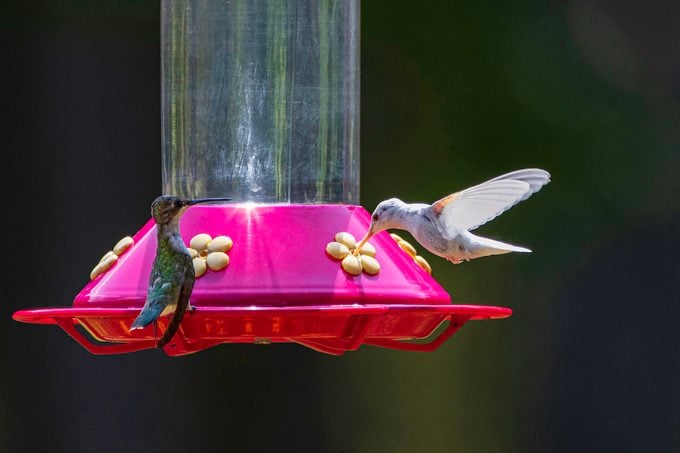
An albino bird lacks all of the color pigment melanin. It sports completely white plumage and is usually devoid of any regular field marks, making it tricky to identify. The genetic mutation is called albinism. Look past its feathers to tell if it’s a true albino—the eyes, beak and legs are always red or pink. The lack of melanin allows blood vessels to show through.
Rare leucistic and albino hummingbirds dazzle bird-watchers.
Leucistic Bird
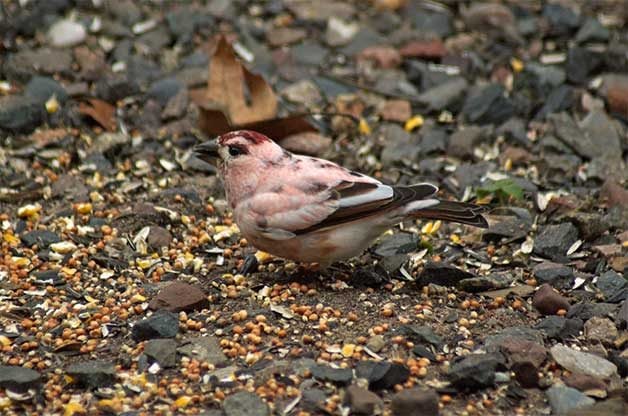
A lesser-known genetic condition is called leucism. Unlike albinism, leucism doesn’t completely eliminate pigment. Leucistic birds have incredibly varied patterns. They may appear more muted than their counterparts or they can be dotted with white patches. These birds are occasionally mistaken for albinos, but leucistic birds always have some pigment in their feathers or other body parts, such as their feet, eyes or beak.
Check out photos of white cardinals and other leucistic birds.
Melanistic Bird
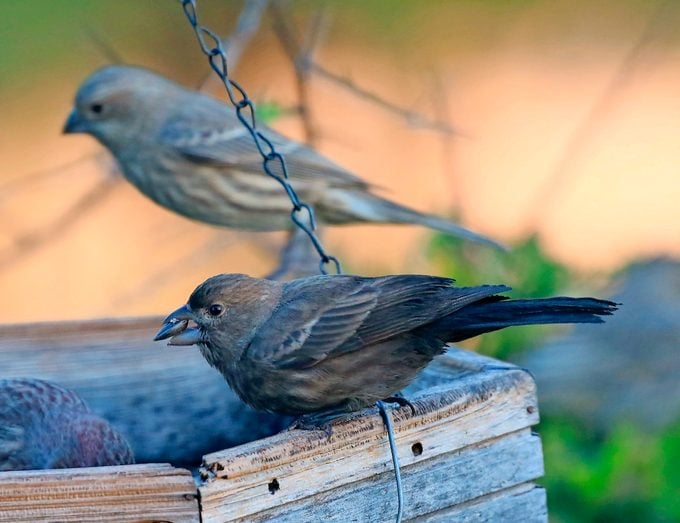
On the other end of the color spectrum is a very rare genetic condition called melanism, in which a bird has extra melanin pigmentation. Most animals—including humans—produce melanin, which pigments hair, skin and more. In birds, it’s responsible for black, brown and tan feathers. When a bird is melanistic, it will appear much darker than the typical coloration for their species.
Is this white bird an albino crow?
Xanthochroic Bird
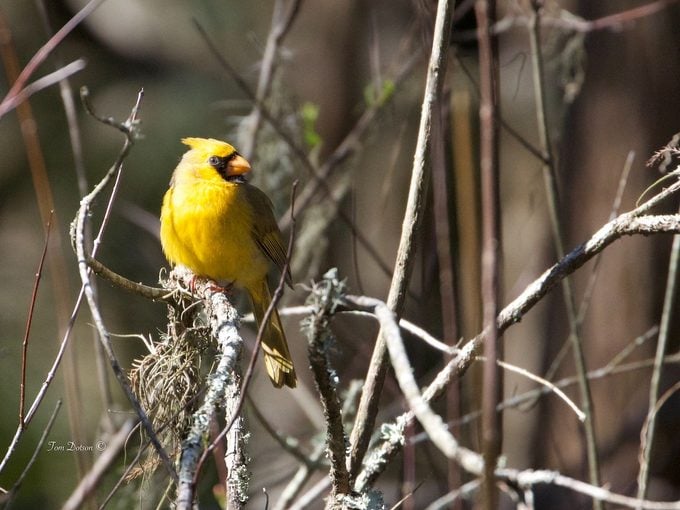
If a bird is yellow or orange where red feathers should be, it could have xanthochroism. Unlike the other conditions covered here, this one can be caused by diet or genetics. It’s more obvious in birds with lots of red plumage, including cardinals and male house finches.
Check out more photos of rare yellow cardinals.
Effects of Albinism in Birds
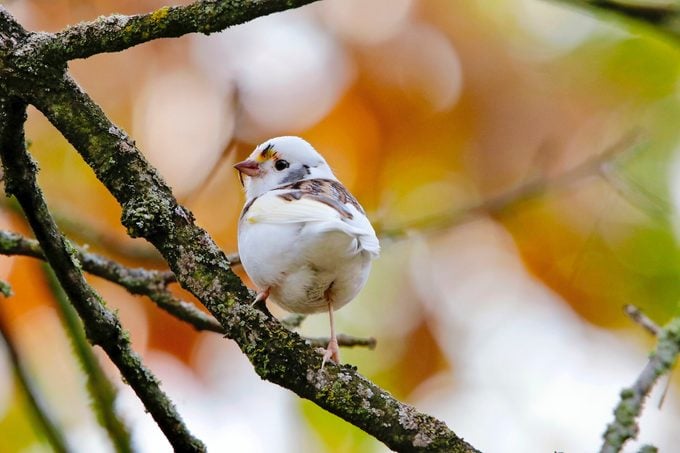
Albino birds are at a great disadvantage because their white feathers stand out against vegetation. Without camouflage, albino birds are easier for predators to spot. Their feathers do offer some protection in snow, but unfortunately they also reduce a bird’s ability to retain heat. Dark colors absorb heat, light colors reflect it, which can mean life or death in freezing temperatures.
Additionally, albino birds suffer from weak feathers due to a lack of melanin. Their feathers break and deteriorate over time. Albino birds also have poor eyesight—another hindrance to survival. As a result, these birds rarely survive past fledging.
Leucistic birds have slightly better chances because they retain some pigmentation. That means a light-colored bird you see in your yard is more likely leucistic than albino. Either way, it’s a rare and exciting sight when such a unique bird stops for a visit!
Question: There is an albino sparrow in my backyard. I’ve read albino birds have poor eyesight and are easy targets for predators. What can I do to help it? —Barbara Stone of Grosse Pointe Farms, Michigan
Kenn and Kimberly Kaufman: If the white sparrow is a true albino with pink eyes, it probably does have poor eyesight. But if it has dark eyes, it’s likely leucistic, meaning that although it may lack pigment in its feathers, it can still see just fine. Despite its coloring, the sparrow could possibly live a long time. Not much can be done to help a bird like this beyond providing food, water and shelter. Roaming house cats are its most likely predators, so keep them indoors.
Five Facts About Discoloration in Birds
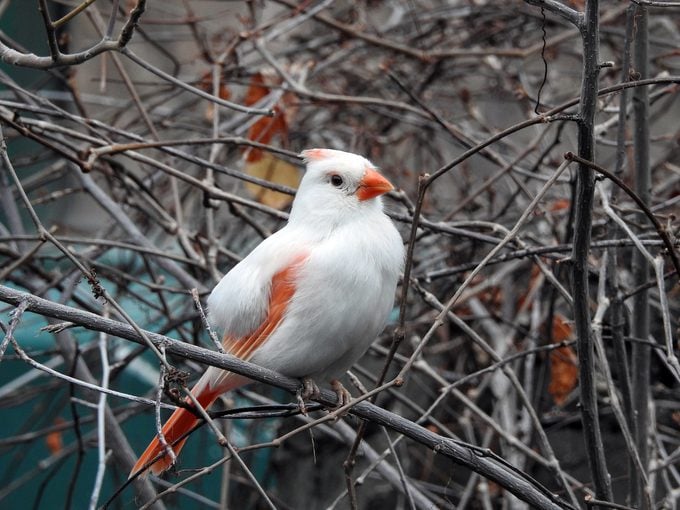
- Genetics determine true albino birds: Both parents have to carry the uncommon recessive genes that produce rare pure white offspring.
- A pied or piebald bird’s leucistic feathers are rarely in a symmetrical pattern.
- Typically, leucism affects only dark feathers, so some birds with leucism have white feathers while still maintaining the bright colors of their red, orange, or yellow feathers.
- A bird is a true albino if its feet, legs, bill, and eyes are pale pink or red.
- Birds with discoloration may struggle during courtship. Many birds use plumage color as a way to find and recognize potential mates.
